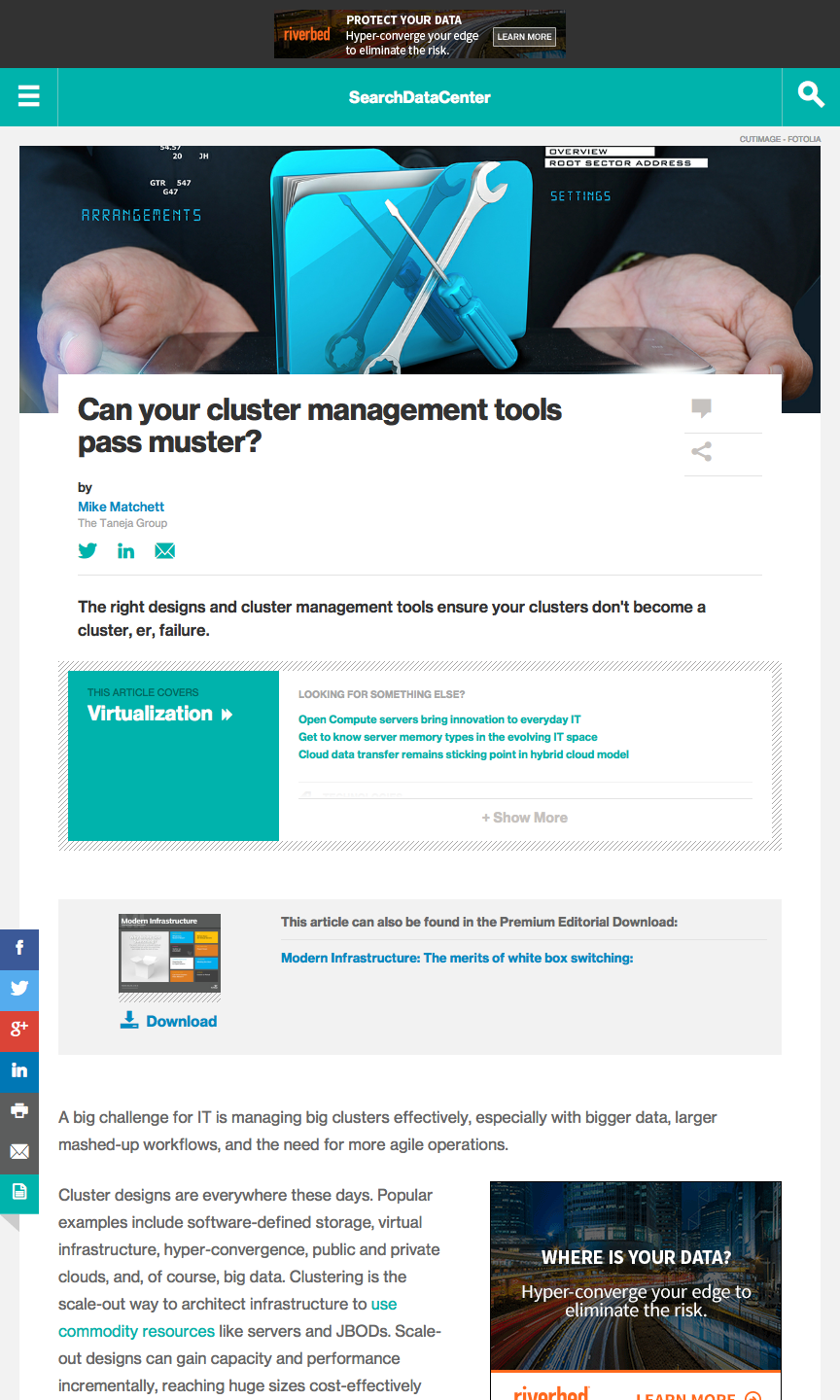Can your cluster management tools pass muster?

An IT industry analyst article published by SearchDataCenter.
 A big challenge for IT is managing big clusters effectively, especially with bigger data, larger mashed-up workflows, and the need for more agile operations.
A big challenge for IT is managing big clusters effectively, especially with bigger data, larger mashed-up workflows, and the need for more agile operations.
Cluster designs are everywhere these days. Popular examples include software-defined storage, virtual infrastructure, hyper-convergence, public and private clouds, and, of course, big data. Clustering is the scale-out way to architect infrastructure to use commodity resources like servers and JBODs. Scale-out designs can gain capacity and performance incrementally, reaching huge sizes cost-effectively compared to most scale-up infrastructure.
Big clusters are appealing because they support large-scale convergence and consolidation initiatives that help optimize overall CapEx. So why haven’t we always used cluster designs for everyday IT infrastructure? Large cluster management and operations are quite complex, especially when you start mixing workloads and tenants. If you build a big cluster, you’ll want to make sure it gets used effectively, and that usually means hosting multiple workloads. As soon as that happens, IT has trouble figuring out how to prioritize or share resources fairly. This has never been easy — the total OpEx in implementing, provisioning, and optimally managing shared clustered architectures is often higher than just deploying fully contained and individually assigned scale-up products.
…(read the complete as-published article there)
